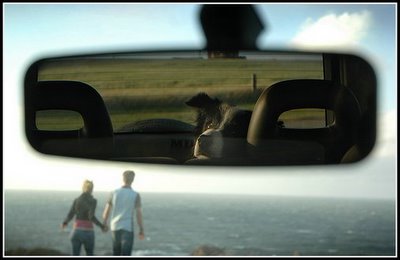Why do we take pictures? Let me explain where I'm coming from on this. I've seen a lot of knit picking comments on photo-upload sites and from photographic judges, and conversely I've seen a huge amount of praise heaped on images which are quite frankly apalling. I'm sure that if you've visited sites where you can upload pictures or been to 'certain' competitions you will know what I mean.
So clearly there are a whole range of motives that play a role when people comment on an image. But objectively, if such a thing is possible, what really counts when you look at an image. Well I go back to the question I started with. Why do you take pictures? The intention of the photographer is integral to understanding and evaluating an image. Often, under the guise of being artistic, a pure a photograher will not say why they took an image... Well that leaves it open to all interpretations. Were they recording something for prosperity, perhaps a family moment, were they trying to master studio lighting etc. We can only really judge an image in the light of the image makers intention. Purpose and meaning are central, however fluffy that may be, say for example to evoke a certain emotion by using a strong colour.
By knowing your intention when you take the photograph and then conveying that to the audience you will help them appreciate the image. From photojournalists writing a cutline (caption) to an artist's statement in a gallery catalogue, words and concepts affect the way we perceive an image, and more than that they add value.
I hope that I make images which touch the viewer and evoke a strong emotion, particularly empathy with the subject. Although I do shoot abstracts and landscapes, I am at heart a photojournalist, seeking to tell a story in a creative way that communicates emotion and engages the viewer.
The image below is an example. It shows a Border Collie looking longingly over the backseat of a car at a young couple in love and involved with each other, walking away toward the sea, on a cliff. The dog caught in the rear view mirror forms a strong focal point in an original and creative composition. The whole story is there.
In fact I had just parked. The dog was my border collie (sadly he passed away - this was his last trip to the sea) and a couple that happened to walk past the car. I saw the potential in an instant. Raised my camera, focused and got the shot. I created a narrative in that moment by juxtaposing two elements. Not photojournalism in the true sense but a moment of artistic creation to tell a story. To me the dog really looks like he is saying "take me too"!
So why to do you photograph?
Paul Indigo
So clearly there are a whole range of motives that play a role when people comment on an image. But objectively, if such a thing is possible, what really counts when you look at an image. Well I go back to the question I started with. Why do you take pictures? The intention of the photographer is integral to understanding and evaluating an image. Often, under the guise of being artistic, a pure a photograher will not say why they took an image... Well that leaves it open to all interpretations. Were they recording something for prosperity, perhaps a family moment, were they trying to master studio lighting etc. We can only really judge an image in the light of the image makers intention. Purpose and meaning are central, however fluffy that may be, say for example to evoke a certain emotion by using a strong colour.
By knowing your intention when you take the photograph and then conveying that to the audience you will help them appreciate the image. From photojournalists writing a cutline (caption) to an artist's statement in a gallery catalogue, words and concepts affect the way we perceive an image, and more than that they add value.
I hope that I make images which touch the viewer and evoke a strong emotion, particularly empathy with the subject. Although I do shoot abstracts and landscapes, I am at heart a photojournalist, seeking to tell a story in a creative way that communicates emotion and engages the viewer.
The image below is an example. It shows a Border Collie looking longingly over the backseat of a car at a young couple in love and involved with each other, walking away toward the sea, on a cliff. The dog caught in the rear view mirror forms a strong focal point in an original and creative composition. The whole story is there.
In fact I had just parked. The dog was my border collie (sadly he passed away - this was his last trip to the sea) and a couple that happened to walk past the car. I saw the potential in an instant. Raised my camera, focused and got the shot. I created a narrative in that moment by juxtaposing two elements. Not photojournalism in the true sense but a moment of artistic creation to tell a story. To me the dog really looks like he is saying "take me too"!
So why to do you photograph?
Paul Indigo

Comments